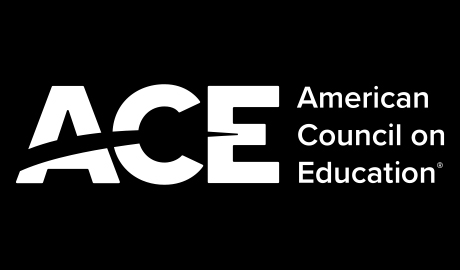STEM Courses by Outlier by Savvas
Careers in science, technology, engineering, and mathematics (STEM) are among the fastest growing and highest paying careers in the U.S. (Bureau of Labor Statistics) Prepare your students for a successful future with STEM college courses worth high school and college credit.
Browse the STEM Course Catalog
Calculus I
The Mathematics of Change
Intro to Statistics
How Data Describes Our World
Precalculus
Master The Building Blocks of Calculus
Computer Science I
Code The Future
Transform your high school classroom into a STEM college lecture hall

Captivating Courses Students Love
Cinematic lectures from experts in the field, combined with interactive learning, create the kind of college courses that students actually enjoy and succeed in.
Seamless Educator Experience
Educators get everything they want—simple setup, engaging lessons, real-time visibility into student progress—without the extra grading or required credentials.

College Credit Students Can Take Anywhere
Recommended by the American Council on Education*, each course earns students real college credits. We’ve sent transcripts to 800+ institutions nationwide—and counting!
Essential STEM Concepts and Techniques Needed for College Credit (and then some!)
-
Calculus I
-
Intro to Statistics
-
Precalculus
-
Computer Science I
-
College Algebra
-
Intro to Astronomy
Key Concepts Covered
-
Functions and Limits
- Representing, modeling, and transforming functions
- Exponential, inverse, and logarithmic functions
- Tangents and instantaneous velocity
- Limits and continuity of functions
-
Differentiation
- Differentiating polynomial, exponential, logarithmic, hyperbolic, and trigonometric functions
- The product and quotient rules
- The chain rule
- Implicit differentiation
- Related rates
- Linearization and differentials
-
Applying Differentiation
- Finding maximums and minimums
- Derivative tests
- Indeterminates and L'Hospital's Rule
- Sketching curves
- Using graphing tools
- Optimization
- Antiderivatives
-
Integration
- Approximating area and distance
- Definite and indefinite integrals
- The fundamental theorem of calculus
- The substitution rule
-
Applying Integration
- Finding areas between curves
- Volume by integration
- Calculating work
- The mean value theorem for integrals
Key Concepts Covered
-
Statistics and Data
- The statistical process
- Data and sampling
- Experimental design and ethics
- Frequency distributions, histograms, box plots, and scatter plots
- Measures of center and spread
-
Probability
- Rules of probability
- Contingency tables
- Random variables and probability distributions
- Discrete random variables
- Binomial distributions
-
Continuous Random Variables and Confidence Intervals
- Continuous random variables and the uniform distribution
- The normal distribution
- The law of large numbers
- The central limit theorem
- Estimating confidence intervals using the normal distribution, the student’s t-distribution, and population proportions
-
Hypothesis Testing
- Type I and II errors
- Making decisions about hypotheses
- Matched samples, paired samples, and independent samples
-
Other Statistical Analyses
- The chi-square distribution
- Correlation coefficients
- Finding significance
- Linear equations and linear regression
- ANOVA testing
- The f-distribution and the f-ratio
Key Concepts Covered
-
Numbers, Functions, and Graphs
- Real numbers
- Exponents and scientific notation
- Roots and complex numbers
- The rectangular coordinate system
- Functions
- Rates of change
- Domain and range
-
Equations, Inequality, and Manipulating Functions
- Linear, polynomial, and quadratic equations
- Other equations
- Inequalities
- Manipulation, transformation and composition of functions
- Inverse functions
-
Graphing Functions
- Linear, polynomial, and rational functions
- Systems of linear functions
-
Exponential Functions
- Exponential growth and decay
- Base e
- Exponential and logarithmic equations
-
Circular Geometry and Trigonometry
- Angles
- The unit circle
- Graphing sine and cosine Functions
- Right triangle trigonometry
- Inverse trigonometric functions
- Trigonometric equations and identities
- Polar coordinates and conic sections
- Introduction to conics
Key Concepts Covered
-
Basics of Computer Science
- The computer science problem-solving process
- Java and other programming languages
- Basic components of a computer
- Syntax and semantics
- Keywords, identifiers, literals, types, and variables
- Declaration and assignment
- Numerical and comparison operators
-
Command Flow Structures
- if, else, else if, and nested if statements
- while, for, do-while, enhanced, and nested loops
- Variable scoping
- Defining and calling methods
- Method signatures and overloading
- Void and non-void methods
- Passing by value
-
Data Structures
- Declaring, traversing, and editing arrays
- Multidimensional arrays
- Defining, comparing, and manipulating strings
- Common String methods
- Declaring, traversing, and editing ArrayLists
- ArrayList methods
- Binary search
- Ethics of data collection and data privacy
-
Objects, Classes, and Inheritance
- Defining and creating classes and objects
- Constructor, main, accessor, and mutator methods
- Data visibility
- Libraries and classes
- Class hierarchies
- Overriding methods
- Polymorphism
- The Object class
-
Error Handling, Exceptions, and Recursion
- Error handling
- Defensive programming
- Enumerated types
- Libraries and classes
- Catching, throwing, and creating exceptions
- Recursive methods
- Selection sort, insertion sort, Quicksort, and merge sort
Key Concepts Covered
-
Numbers, Functions, and Graphs
- Real numbers
- Exponents and scientific notation
- Roots and complex numbers
- The rectangular coordinate system
- Functions
- Rates of change
- Domain and range
-
Equations, Inequality, and Manipulating Functions
- Linear, polynomial, and quadratic equations
- Other equations
- Inequalities
- Manipulation, transformation and composition of functions
- Inverse functions
-
Graphing Functions
- Linear, polynomial, and rational functions
- Systems of linear functions
-
Exponential Functions
- Exponential growth and decay
- Base e
- Exponential and logarithmic equations
Key Concepts Covered
-
Introduction to Our Stellar Course
- A tour of the universe
- Astronomy in history
- Astronomy and astrology
- Gathering, detecting, and interpreting light
- What is light?
- Light and matter
- Telescopes and instruments
- Analyzing starlight and stellar properties
- Measuring stellar properties
- Classifying stars and their spectra
- The Hertzsprung–Russell Diagram
-
The Origin of the Solar System
- Solar system formation
- Planetary motion and orbits
- Observing the Sun
- The solar cycle and space weather
- Earth as a planet
- Our amazing Moon
- Properties and origin of the Moon
- Moon phases and eclipses
-
The Inner and Outer Solar System
- Mercury: A planet of extremes
- Venus: Earth's sister planet
- Mars: The Red Planet
- The Jovian planets
- Mysterious outer moons
- Exoplanets
- Planets beyond our solar system
- Astrobiology and life in the universe
- The life cycles of stars
- Our galaxy: the Milky Way
- Characteristics of the Milky Way
-
Galaxies & The Expanding Universe
- Galaxy basics
- The Big Bang
- Universe expansion and the cosmic microwave background
- Large-scale structure and cosmology
- Galaxy formation and evolution
- Quasars and their relatives
- The cosmic web
- Dark matter and dark energy
- Dark energy and the fate of the universe
School Stories
“I was blown away with how successful our kids were with Outlier.” Jack Wallace, Principal of St. Augustine Prep High School
Read Case StudySTEM Courses Frequently Asked Questions
-
Are courses completely online?Yes, Outlier courses are 100% online and asynchronous. Your students can learn with any teacher, during any class period—anywhere in the universe with Wi-Fi and a laptop or desktop computer.
-
What support is available for students and/or teachers?Your students have access to robust support and unlimited tutoring in all math courses. Your teachers get complete visibility into student progress in our Partner Dashboard, including:
- Progress monitoring based on the course syllabus and schedule
- Grade pacing and forecasting based on students’ performance
-
What is the minimum/maximum enrollment?Outlier courses have unlimited enrollment. So you can mix and match courses to suit your school’s unique needs.
-
What technology does my school need to take Outlier courses?Each student must have access to technology that meets the technical requirements noted in this Help Center article.
-
Are there any student eligibility requirements?Students must be at least 13 years old. Students who enroll in an Outlier course should be ready for the academic rigor of college-level coursework and carefully consider their existing responsibilities and dedication.
-
What is the time commitment for Outlier courses?Outlier courses are as academically rigorous as they are engaging. Students can expect to spend about 45 minutes a day (about 5 hours per week), including time at school and at home. We recommend students:
- Have at least one class period in their school schedule dedicated to their Outlier course
- Take only 1 Outlier course at a time
-
Are there any course prerequisites?Outlier courses are introductory level. So most do not require any prerequisites for enrollment, with a few exceptions. For College Algebra, Precalculus, or Calculus, we strongly suggest you administer a provided pre-test to determine if a student is prepared for the course. In our experience, students who pass the pre-test show a strong foundation in essential concepts for these courses and are better prepared to succeed.
-
How are Outlier courses structured?Outlier courses are divided into a series of chapters and sections. Each section contains cinematic video lectures and active learning (interactive digital textbook) that help students learn the course content. Some courses also include sample problems or flashcard sets that reinforce their understanding of course concepts and prepare them for exams. Students demonstrate their knowledge on graded assessments like weekly writing assignments, quizzes, midterm exams, and final exams.
Prepare your students for college and career success. All with one solution.
Whether you want to empower your students to explore potential careers, prepare for college, or become certified professionals, it’s easy to do it all with Savvas PathMaker. Simply mix and match dual enrollment courses and CTE courses from our comprehensive catalog to create personalized pathways for every student.
Mix and match to build your perfect career pathways:
| Example Pathway | What students learn | What students earn |
|---|---|---|
| IT Associate | Networking† Cybersecurity 1† Professional Communication * |
Cisco Certified Network Associate 3 college credits |
| Aerospace Technology | Aeronautics and Space Travel † Drones: Remote Pilot † Intro to Astronomy * |
FAA Part 107 Commercial Drone Pilot 3 college credits |
| Digital Marketing | Meta® Social Media * Adobe InDesign® † Professional Communication * |
Meta® Certified Digital Marketing Associate Adobe® Certified Professional in Print & Digital Media Publication using Adobe InDesign® 3 college credits |
* Outlier by Savvas Dual Enrollment
*American Council on Education or ACE evaluates formal education courses and programs for college credit. For more information, visit ACE Learning Evaluations online at www.acenet.edu/evaluations.